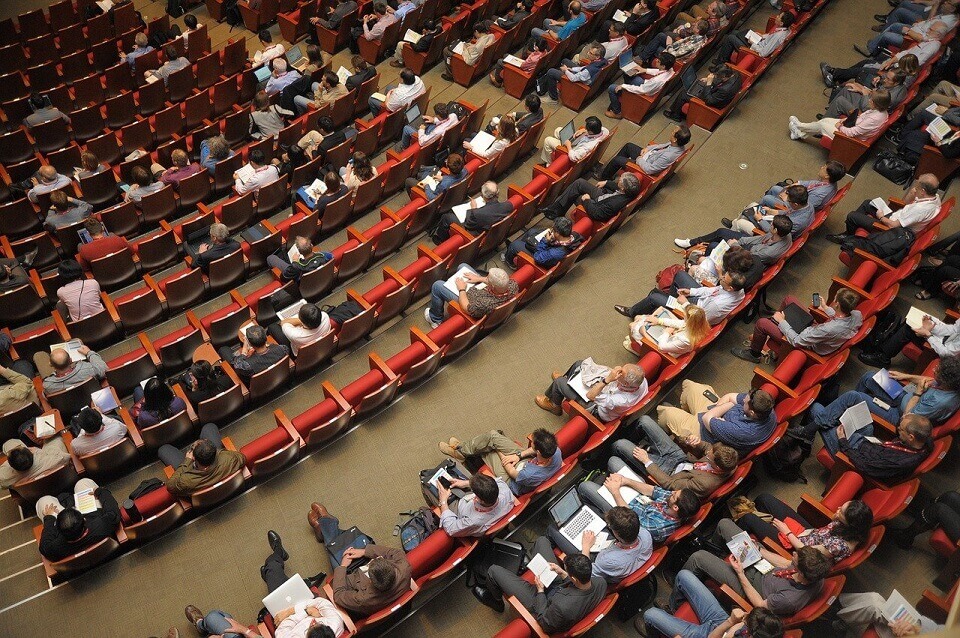
Community events are a great way to bring people together, forge new relationships and create shared experiences. They can be fun, they can be educational, and they can also serve as a great way to raise money for your favorite cause.
But event planning a community event is not easy. You need to know where your audience will come from, how much it will cost, how many people you'll have in attendance, and how long everything will take for a successful event.
Luckily for you, we've put together this handy event planning checklist so you'll have all the information you need to create a comprehensive event plan.

The first thing event planners need to do is find a suitable location for the community event. The venue should be able to accommodate the size of the audience you're hoping to attract and also fit in with your branding and marketing strategy. If you need to book multiple rooms within the same building, ensure they are connected so that attendees can move between them easily.
You'll also want to consider whether or not there will be parking available on-site so that attendees don't have to walk far from their vehicles. If this isn't possible, you might consider offering shuttle services or discounted parking at nearby lots or garages.
As you're planning your event, you'll need to be sure to get all the appropriate permits and insurance.
Permits are required for any public assembly or event and can usually be obtained from your local municipality or county government office. They will be specific to the type of event you're planning—for example, if you want to host a concert in a city park, you'll need a permit from the city council.
Permits are required for any public assembly or event and can usually be obtained from your local municipality or county government office. They will be specific to the type of event you're planning—for example, if you want to host a concert in a city park, you'll need a permit from the city council.
Suppose you want to host an outdoor cookout on private land. In that case, you'll need permission from the property owner and an insurance certificate showing that they have liability coverage for guests who might get hurt on their property.
You can find out more about what type of insurance is required for your event by contacting your local chamber of commerce or attorney's office; they should be able to guide you through all the necessary steps to protect yourself and others involved in organizing an event.
Now that you've planned your event and found a venue, it's time to outline your event budget. It's important to note that local businesses often sponsor community events, so keep that in mind as you draft your event budget for the next event.
To ensure you don't overspend on things like decorations or food, try to be as realistic as possible. You'll also want to consider any additional event space costs that might pop up—like if the weather turns out colder than expected or if extra security is needed for a networking event with a large turnout.
Once you have an idea of what the total cost will be for your actual event, start contacting potential sponsors. Your local chamber of commerce may be able to put you in touch with some businesses in your area. Or if there are some companies in town that have previously been involved with other in person events, see if they'd be willing to sponsor this one too.
Now that you've taken the first three steps and have a clear vision for your event goals, it's time to get down to the nitty-gritty of the event management planning process.
An event planning timeline is a good way to keep your team on track and ensure that everything gets done on time. It also helps you as an event planner to plan what needs to happen first and how long each step will take.
Think about how your event will be structured, and then create a timeline based on the different activities you want to include. Here's an example of one for a community event that has three main parts:
Your event marketing strategy is where you get to have some fun. It's the part of your event planning where you can get creative with your target audience and figure out the best ways to reach them for your next event. Whether that's through social media, print ads, or billboards. The event promotion possibilities are endless.
There are many different event management marketing plans out there, but we recommend starting with a simple one: a basic one-page summary of what your event is all about and how you plan to promote it. This should include:
This basic marketing plan is all you need to get started. You can always add to it as time passes and your event grows more popular.
The next step in event planning a community event is to secure vendors. When looking for vendors, it's important to ensure they are reputable, have experience with similar events, and can meet your needs. Here's how to do it:
Your entertainment and activities should be chosen to fit your audience, but not all events will require the same level of production. A barbecue might just need a DJ and some dancing, while an outdoor festival might require a live band and other acts.
If you want to use a live band, decide how many musicians you'll need based on the venue size and how loud you want them to be. You should also consider how many instruments they'll bring if any. If you're holding an indoor event, consider hiring a DJ instead—they can play music from various genres and styles, so it's often easier to find one that fits your tastes.
If your event is outdoors or in a large space like an auditorium or convention center, you might also want to hire lighting experts. They can provide colorful lighting effects that will instantly transform any space's mood by creating different colors across sections of walls or floors using moving lights that change colors rapidly.
Your event is going to be a huge success. You've got the venue, the food, and the entertainment all lined up. But what about safety? What about security?
Safety plans are an essential part of any community event. You need to make sure you have a plan in place for all kinds of emergencies, including fire, weather, and medical emergencies. You should also make sure you have a plan for emergency evacuations.
If there are large crowds at your event, it's important to have a security plan as well. This includes making sure that there is enough security staff on hand to handle any issues that come up.
If you've ever planned an event, you know how much work goes into it. There are so many moving parts, and it's easy to feel like you're drowning in a sea of details. Luckily, some great event management software tools can help make the process much easier.
EventPro is one such tool. This comprehensive all-in-one system integrates event management, venue booking, ticket sales, and catering functionality. This means that you can manage your entire event from one place, ensuring that nothing slips through the cracks.
This corporate event planning software system is also completely customizable to suit your organization's needs and ensure that your event registration runs smoothly from start to finish.

The bottom line is that community events are fun, they're a great way to get people together and build a sense of community pride, and they can be a source of revenue for your organization.
But it's important to ensure that your event is organized well and executed properly to ensure everyone has a good time. If you follow these tips and put in the work, then you'll have an event that everyone will remember fondly.